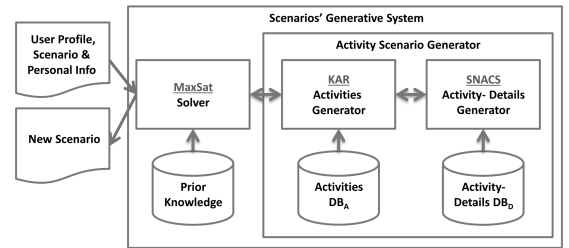Emerging Technology From the arXiv:” Serious games are becoming increasingly popular but the inability to generate realistic new content has hampered their progress. Until now.

Here’s an imaginary scenario: you’re a law enforcement officer confronted with John, a 21-year-old male suspect who is accused of breaking into a private house on Sunday evening and stealing a laptop, jewellery and some cash. Your job is to find out whether John has an alibi and if so whether it is coherent and believable.
That’s exactly the kind of scenario that police officers the world over face on a regular basis. But how do you train for such a situation? How do you learn the skills necessary to gather the right kind of information?
An increasingly common way of doing this is with serious games, those designed primarily for purposes other than entertainment. In the last 10 years or so, medical, military and commercial organisations all over the world began to experiment with game-based scenarios that are designed to teach people how to perform their jobs and tasks in realistic situations.
But there is a problem with serious games which require realistic interaction is with another person. It’s relatively straightforward to design one or two scenarios that are coherent, lifelike and believable but it’s much harder to generate them continually on an ongoing basis.
Imagine in the example above, that John is a computer-generated character. What kind of activities could he describe that would serve as a believable, coherent alibi for Sunday evening? And how could he do it a thousand times, each describing a different realistic alibi. Therein lies the problem.
Today, Sigal Sina at Bar-Ilan University in Israel, and a couple pals, say they’ve solved this probelm. These guys have come up with a novel way of generating ordinary, realistic scenarios that can be cut and pasted into a serious game to serve exactly this purpose. The secret sauce in their new approach is to crowdsource the new scenarios from real people using Amazon’s Mechanical Turk service.
The approach is straightforward. Sina and co simply ask Turkers to answer a set of questions asking what they did during each one-hour period throughout various days, offering bonuses to those who provide the most varied detail.
They then analyse the answers, categorising activities by factors such as the times they are performed, the age and sex of the person doing it, the number of people involved and so on.
This then allows a computer game to cut and paste activities into the action at appropriate times. So for example, the computer can select an appropriate alibi for John on a Sunday evening by choosing an activity described by a male Turker for the same time while avoiding activitiesthat a woman might describe for a Friday morning, which might otherwise seem unbelievable. The computer also changes certain details in the narrative, such as names, locations and so on to make the narrative coherent with John’s profile….
That solves a significant problem with serious games. Until now, developers have had to spend an awful lot of time producing realistic content, a process known as procedural content generation. That’s always been straightforward for things like textures, models and terrain in game settings. Now, thanks to this new crowdsourcing technique, it can be just as easy for human interactions in serious games too.
Ref: arxiv.org/abs/1402.5034 : Using the Crowd to Generate Content for Scenario-Based Serious-Games”
